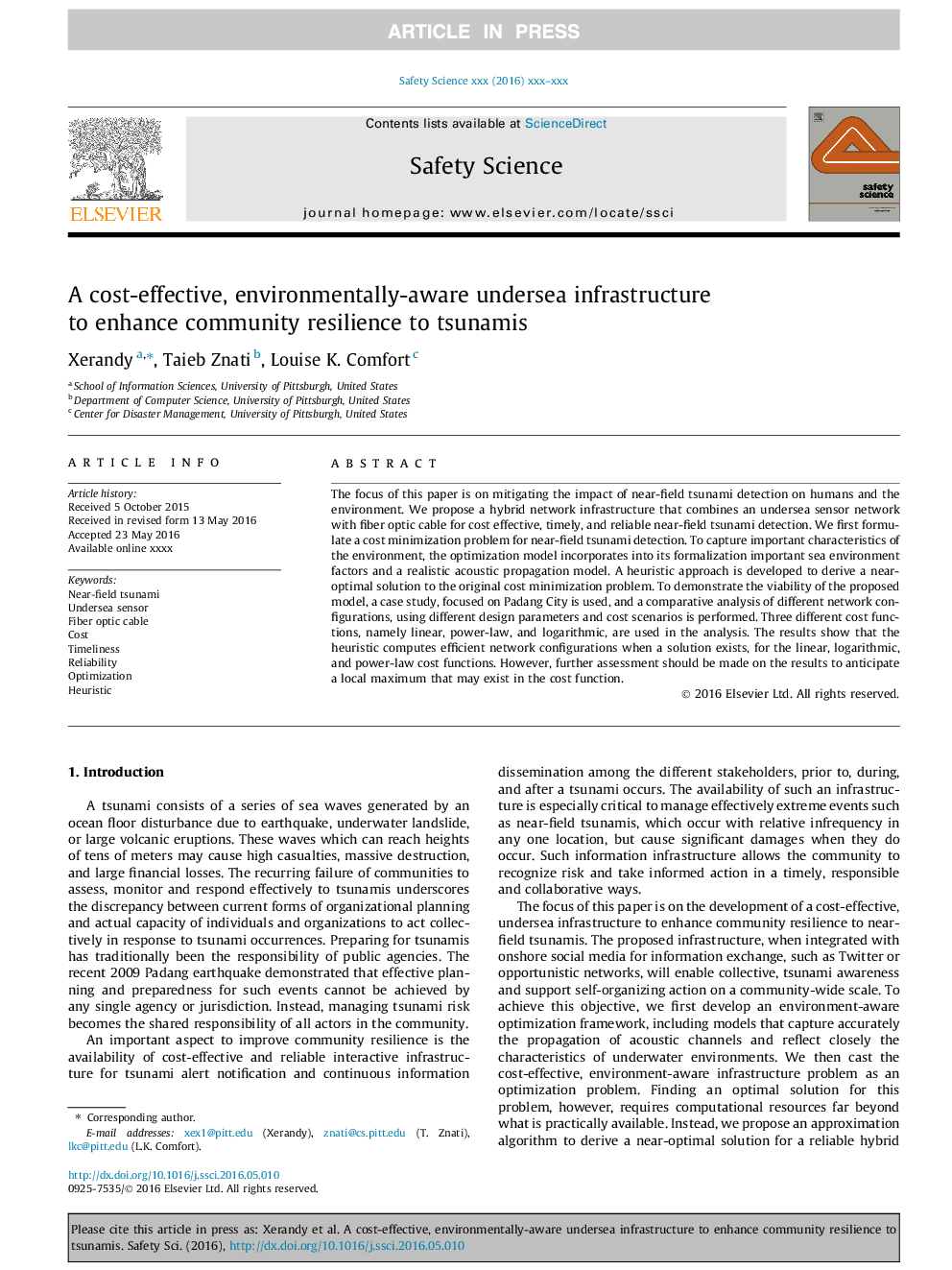| Article ID | Journal | Published Year | Pages | File Type |
|---|---|---|---|---|
| 4981348 | Safety Science | 2016 | 13 Pages |
Abstract
The focus of this paper is on mitigating the impact of near-field tsunami detection on humans and the environment. We propose a hybrid network infrastructure that combines an undersea sensor network with fiber optic cable for cost effective, timely, and reliable near-field tsunami detection. We first formulate a cost minimization problem for near-field tsunami detection. To capture important characteristics of the environment, the optimization model incorporates into its formalization important sea environment factors and a realistic acoustic propagation model. A heuristic approach is developed to derive a near-optimal solution to the original cost minimization problem. To demonstrate the viability of the proposed model, a case study, focused on Padang City is used, and a comparative analysis of different network configurations, using different design parameters and cost scenarios is performed. Three different cost functions, namely linear, power-law, and logarithmic, are used in the analysis. The results show that the heuristic computes efficient network configurations when a solution exists, for the linear, logarithmic, and power-law cost functions. However, further assessment should be made on the results to anticipate a local maximum that may exist in the cost function.
Related Topics
Physical Sciences and Engineering
Chemical Engineering
Chemical Health and Safety
Authors
Xerandy Xerandy, Taieb Znati, Louise K. Comfort,
